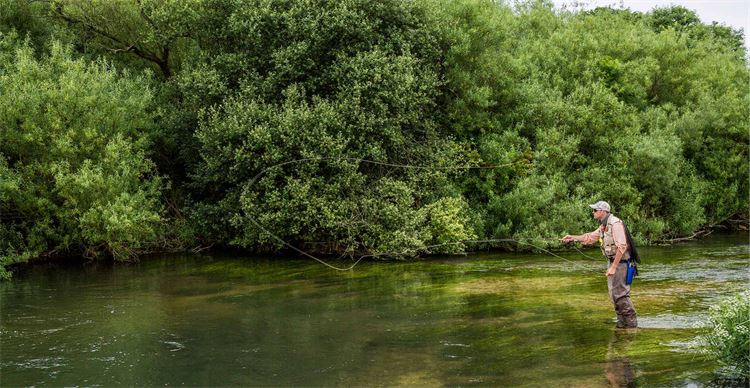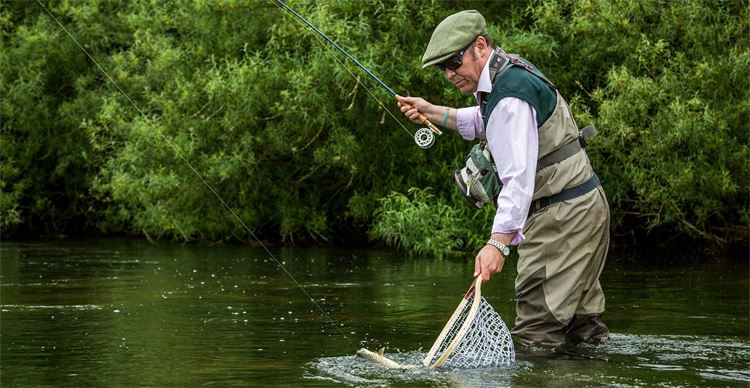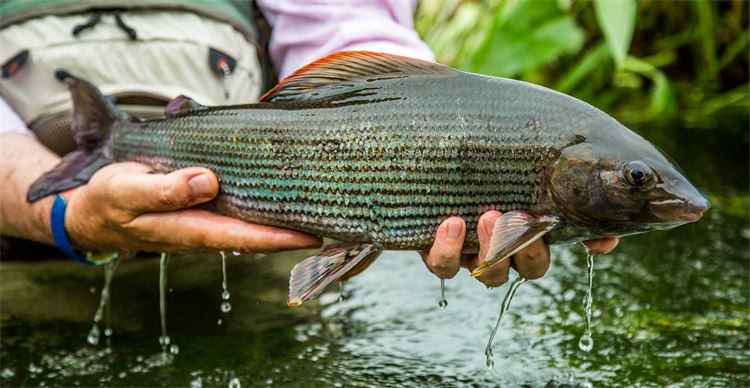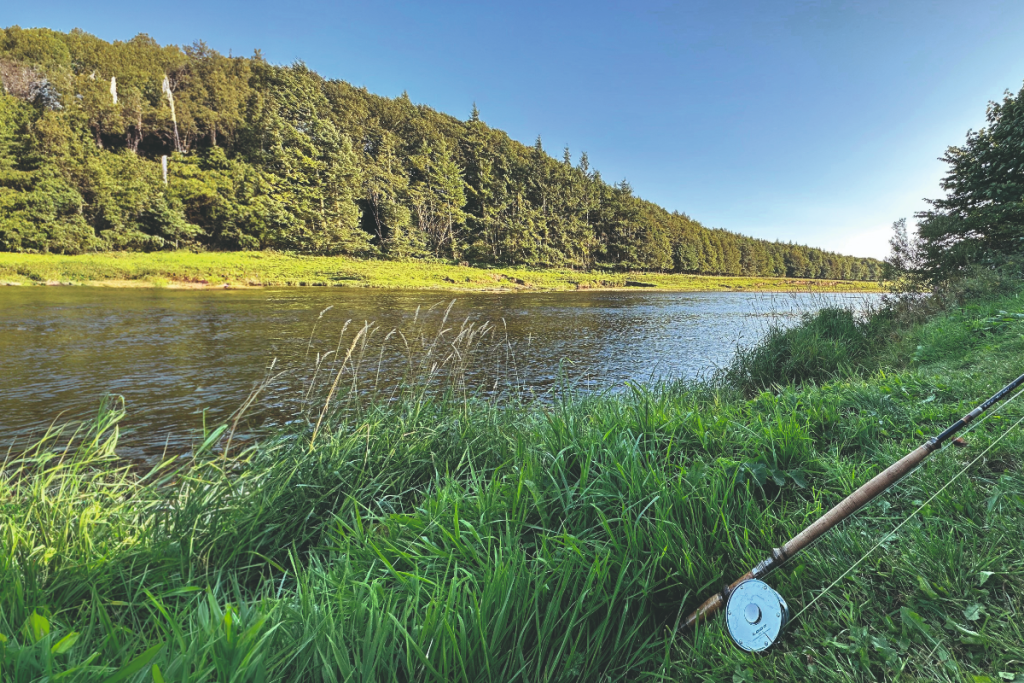River Frome, Dorset
Unpredictable, challenging, different, yet remarkably memorable. Matt Kidd recounts his first ever visit to the River Frome in Dorset.
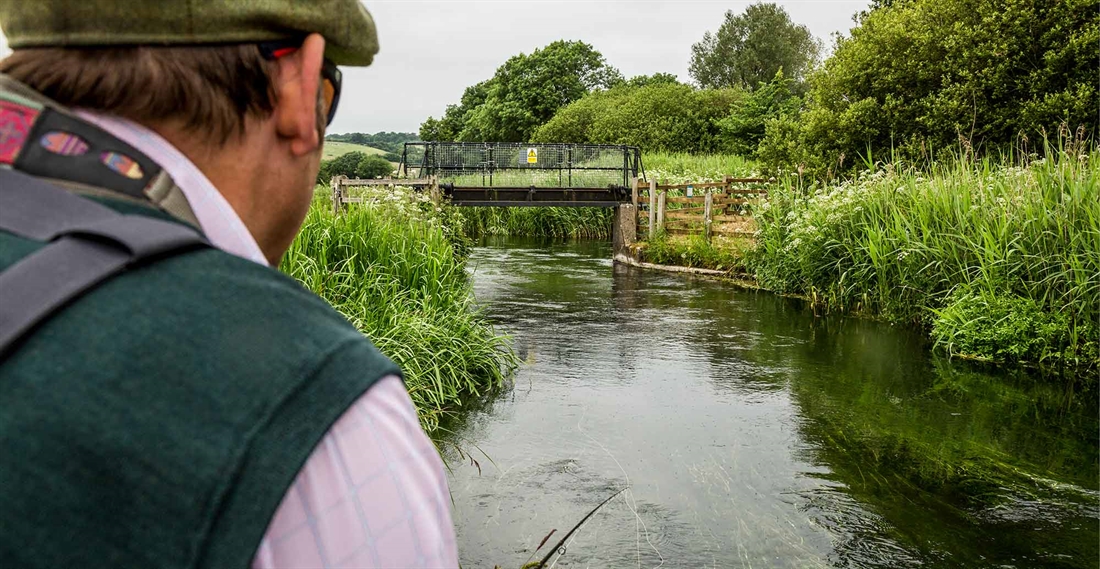
I like surprises. Whether in the form of a gift hidden against the trunk of the Christmas tree, a glimpse of a shooting star in my peripherals whilst gazing at the night sky, or even a simple text message from a friend I haven’t heard from in some time. Surprises that excite me most, however, tend to come when I have a fly rod in my hand – an example would be from a trip to the River Frome in Dorchester, Dorset in June, having taken up a very kind trout fishing invite from Tim Hill of Edgar Brothers.
To add a little perspective, there are approximately 200 chalkstreams on planet Earth, and the UK is immensely fortunate to be home to 85 per cent of them – they are a precious resource for so many rare species of wildlife. There’s no wonder fishermen and women travel from all corners of the globe to see these crystalline waters for themselves, and I count myself very lucky to have fished many of them in my youth including the Avon, Test, Itchen, Wylye (my favourite) and some of their tributaries like the Dever, Nadder and Anton, to name but a few.
Dorset’s River Frome, however, is one chalkstream that meanders through the southern counties in which I had never wetted a line, despite the fact it winds its way from Evershot, north-west of Dorchester, for some 30 miles to Poole Harbour where my late great aunt lived for over 80 years. It is one of the major chalkstreams in the South West and has a good reputation amongst anglers for big wild and stocked fish.
Over the years, the Frome has thrice laid claim to the British grayling record – each of the fish weighing over 4lb. And in 1911 Major Charles Robert Eustace Radclyffe landed a 202lb common sturgeon at Bindon Mill!
Like the majority of chalkstreams, the Frome is said to be slow flowing and crystal-clear nearly all of the time, with gravelly bottoms and beds of ranunculus. Each chalkstream has a personality of its own, though, so I was eager to experience it first hand.
I was on a high from the moment the 6am alarm clock finally sounded and woke me ready to start my journey from Lincolnshire to Dorset. I couldn’t stop thinking back to a phone call with Tim: “Let’s aim for a day in early to mid-June, Matt – the Frome is famous for its late hatches of mayfly! It will be a trout fisher’s dream.” Of all the days I’ve fished in the months of May and June, the king of all invertebrates has only been present in low numbers a handful of times, except on my dad’s 56th birthday when they were so prolific that even I could have swallowed a few.
I rendezvoused with Tim, the syndicate captain Geoff Edwardes and his wife Anthea at the Wiseman Inn in West Stafford at midday. As syndicate captain, Geoff is responsible for making sure only two of the 12 members fish the water at any one time, and also plans the river maintenance, electrofishing – which is conducted bi-annually – and stocking.
“This private beat is a little over a mile long and incorporates some stunning features like islands, bridges and hatchpools etc.,” said Geoff. “Each spring we stock the top of the beat with just 150 brown trout around the 1lb mark from a quality hatchery upstream. The majority of the fish are wild, though, and fine specimens of over 3lb are caught regularly.
“This summer it has been fishing extremely well. The mayfly have been coming off in good numbers since early June, so you should have some fine fishing today,” he added. Having picked up the gate key from Geoff, Tim set off to the river with me following behind.
Ten minutes later we were parked at the top of the beat. Before tackling up, we stood on top of the bridge and peered down at the water below through the lenses of our polarising glasses, ready to spot fish lurking below. I was amazed at the depth of the water – never before had I seen a chalkstream like it. Above the bridge the water must have reached a depth of 6ft, whilst downstream it was too deep to gauge – you couldn’t even see the bottom. There were no signs of Salmo trutta yet, but there was plenty of fly life, which was promising. “Let’s tackle up, head to the bottom of the beat and work our way back,” said Tim.
As we went further downstream, Tim noting typical trout hotspots for us to return to, there were shallower stretches of river where thick, white-flowering ranunculus clung to the gravel bottoms – akin to the chalkstreams I’m familiar with. “The margins are very deep here, sometimes 5–6ft or more,” he said, pointing his rod tip along the reeds. “The banks can be undercut, too, providing fish with great protection. Casting dries blind can provide some exhilarating sport when not a lot is happening on the surface. If you only cast at what you see, you could really struggle here.”
We spotted the first fish of the day, of about a pound, holding in the current upstream of the halfway bridge. A little further on we stopped at a style where a bird had been feeding on blue damselflies and had left the indigestible wings to litter the floor. “What I love most about this beat is that it is not manicured. This is by order of the Wakely Family who own the beat. They have farmed the surrounding land since 1933 and prefer Mother Nature to control and shape the water’s edge – man’s only influence on the river features is the annual cutting of ranunculus,” admitted Tim. Stinging nettles, umbellifers, sedges, sweet grass and common reeds line most of the banks – access points are few and far between in some stretches – and willow, hawthorn and alder create challenging obstacles and overhangs. Accurate casting is a must. You really do get the feeling that you are still in the wild, which is what fishing is all about.
At the bottom bridge we decided to split up and fish separately – I went downstream and Tim went upstream. A single dry fly was the method of choice for both of us. I opted for a French Partridge Mayfly to begin with – a favourite pattern of Tim’s during Duffer’s Fortnight – and cast it blind into the 6–12″ margins between the bank and ranunculus on both sides of the river. Surprisingly, we’d yet to see a fish rise.
There were clouds of flies about, not just an impressive number of mayfly, but brown sedges and midges, too. I tried a few other mayfly patterns and a sedge imitation, to no avail, then I lightened and degreased my leader – still no luck. At least the birds were enjoying the food available; swifts and swallows chased flies overhead, and the burr of a nearby sedge warbler cut through the warm breeze. Further downstream a swan gracefully dipped its bill into the water to feed.
Tim and I reconvened at the bridge. Neither of us had seen so much as a dorsal fin break the surface and it was now 4pm. “Could it be a change in barometric pressure – it’s been hot all week and is overcast today?” Tim pondered. “Perhaps they have already gorged themselves and are no longer feeding, or maybe they are feeding on the nymph? I’ve never known it like this.”
And so, hoping for the best outcome to our conundrum, I tied on a Red-Neck Pheasant Tail and French nymphed. I reached the pool under the bridge – a trout hotspot that Tim had pointed out earlier. Again, it was immensely deep. The bottom was invisible. I swapped the fly for a much heavier version tied with a 4mm tungsten bead – the same fly I might use occasionally in a powerful freestone river. It entered the water with a splash and dropped like a stone. I lifted and dropped the rod tip again and again, moving the fly in a way that imitates an emerging mayfly nymph.
Whack! The take was rock-solid, typical of a big grayling. With the hook set, I stood from my stealthy crouch to get a better view. The fish rolled over and shook, revealing its pale underbelly against the darkness before setting its scarlet-edged fins like anchors in the current.
“Jesus Christ… This is a monster, Tim!” I shouted.
Tim, who had started off upstream again, threw his rod into the rushes and ran to grab the camera. Minutes had passed before I shakily plunged the net into the water and secured the fish, letting out a sigh of relief. Regaining my breath, I slid into the water at the shallower tail of the pool and measured the fish with a tapemeasure before taking a few photos. I consider anything in the range of 35–40cm a big grayling, and my personal record – landed on the Hampshire Avon some 10 years ago – measured 45cm. This fish measured an eye-watering 53cm and was as broad as a Grafham rainbow trout. If only I had a set of scales.
“I knew there were some big grayling in this river,” said Tim, as the fish slunked back into the current. “But I’ve never seen one that big! That’s got to be a fish of a lifetime – I don’t think we will forget about it anytime soon.” Elated, and with the fish’s aroma of thyme (my favourite smell) clinging to my wet hands – I picked up my rod and fished the remainder of the pool.
We continued to leapfrog our way upstream, fishing many of the bends and inviting lies. Hours passed and neither of us had another touch.
It was now 6:30pm and the clouds of mayfly were returning to the water, dipping their thick abdomens into the film before beating their wings to lift off again. Then, at last, the first ring of a rising fish upstream. And then another, and another.
When I caught up with Tim moments later, a fish had finally engulfed his mayfly imitation and was making a commotion on the surface as he reached out with his net. It was a stunning brownie with a butter-yellow belly and beautiful markings, typical for the area, Tim assured me.
We continued for another hour before dusk started to threaten and we called it a day. Both of us had plenty more chances on dries. I had hooked and lost a couple, appallingly, but Tim had successfully landed another.
I had driven all of some 220 miles with expectations of a bonanza day on the trout and hadn’t landed a single one. Was I disappointed? Far from it. That grayling was a real bonus, a fish of a lifetime, and I could not have been more elated because of it. I smiled for the whole journey to my great uncle’s house that night, and I’m still smiling weeks later! No other sport offers surprises like that.
Wishing you all the best for Duffer’s Fortnight!
Related Articles
Get the latest news delivered direct to your door
Subscribe to Fieldsports Journal
Elevate your experience in the field with a subscription to Fieldsports Journal, the premium publication for passionate country sports enthusiasts. This bi-monthly journal delivers unparalleled coverage of game shooting, fishing and big game across the UK and beyond.
Each issue offers a stunning collection of in-depth features, expert opinions and world-class photography, all presented in a timeless yet contemporary design.
Save 10% on shop price when you subscribe, with a choice of packages that work for you. Choose from Print & Digital or Digital only with each journal delivered directly to your door or via the app every other month, plus access to past issues with the digital back issue library.






